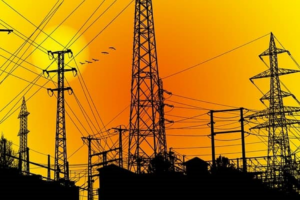There are total five types of kinetic energy as listed below:
Kinetic energy:
On a broad level, Energy is a quality of objects that may be transferred to other objects or transformed into different forms, but it cannot be created or destroyed. In objects, it is a quality that may be transmitted from one item to another or turned into multiple forms in different situations.
Kinetic energy is defined as the energy that is associated with items that are in motion or moving. For example, while an aeroplane is in flight, the aeroplane is moving through the air at a high rate, exerting force on its surroundings and causing change to occur. The jet engines work by transforming potential energy in the fuel to kinetic energy in the form of movement and thrust.
Our understanding of KE and how we apply it in science is well-established. Make it more relatable now by talking about the five distinct types of KE and how we utilise them in our everyday lives, to illustrate our point.
Read more on uses of kinetic energy.
Types of kinetic energy
Mechanical energy:
It is the form of energy that can be seen with our eyes that is known as mechanical energy. The greater the speed at which an item travels and the bigger the mass it possesses, the greater the mechanical energy it possesses and the greater the ability of the thing to perform work. A good illustration is when a bowling ball hits a pin in a game of bowling. A windmill, on the other hand, can collect wind energy, and a hydroelectric dam can create power from a moving water source, which is more significant.

Image Credits: Image by VIVIANE MONCONDUIT from Pixabay
Electrical energy:
Electrical energy is the amount of energy that electrons have when they are travelling. A small group of particles known as atoms make up all of the items in the universe. Atoms are composed of very small components such as electrons, protons, and neutrons, which combine to form a molecule.
In an atom, the electrons that are present travel around the nucleus of the atom at all times. Atomic electrons gain energy and become free when a voltage or electric field is delivered externally to the atom’s nucleus. Electrical energy or electricity is the term we use to describe the energy carried by a free electron. A desk light or a cell phone that is connected into the wall are both powered by the movement of these electrons in our daily lives.

Image Credits: Image by Susan Cipriano from Pixabay
Radiant energy (or Light energy):
Radiant energy is the term used to describe the energy involved in electromagnetic radiation or light. Radiant energy is also referred to as electromagnetic energy in some circles. This energy has the ability to move through space or via a medium. As we all know, kinetic energy is defined as the energy of motion. Radiant energy is constantly in motion as it travels across space or via a medium. This has resulted in it being referred to as a kind of kinetic energy. Radiant energy is emitted by everything that has a thermal state.
A number of various types of radiation can be used to represent radiant energy, including gamma rays, X-rays, ultraviolet light, visible light (violet, indigo, blue, green, yellow, orange, and red), infrared radiation, microwaves, and radio waves. Radiant energy is also used to describe the energy that the sun sends out into space to reach the planet. If the energy is directed in a straight path, it moves at an extremely high speed (3 × 108 m/s).
Depending on the wavelength of the radiant energy or light energy, it may be visible to the human eye or invisible to the naked eye. The joule is the SI unit of radiant energy, just as it is for all other forms of energy in the universe. The sun’s heat is a clear example of radiant energy. Lightbulbs, a toaster in your kitchen, and X-rays are more examples.
Read more on examples of light energy

Image Credits: Kurt Salzmann, Light Energy, CC BY 3.0
Read more on what is kinetic energy of light.
Thermal energy:
Heating and cooling are both examples of thermal energy, which may be perceived by people in the form of heat. Thermal energy, on the other hand, has everything to do with the amount of atom and molecule activity in a given item. The faster the speed at which they are travelling, the greater the probability that they will collide with one another. In a physical object, thermal energy refers to the internal energy produced by the motion and collision of atoms and molecules. The temperature or a thermal energy of a substance can be measured in degrees Celsius. Thermal energy is indeed referred to as heat energy in some circles.
It is the atoms and molecules that serve as the fundamental building blocks of all stuff in the cosmos. Throughout this system, all of the atoms and molecules are constantly moving. We can’t observe the movement of this energy with our eyes since it is invisible to them. When it comes into contact with our skin, we can feel it. For example, when standing outside in the sun, you cannot see the heat. But you can always feel the heat.
Thermal energy is created when atoms and molecules clash with one another as they move faster than they can go. The kinetic energy of the atoms and molecules in a substance’s composition determines the thermal energy of the thing. The atoms in hotter substances will travel or vibrate more quickly, resulting in a greater amount of kinetic energy. As a result, they will generate more thermal energy.
The kinetic energy of the atoms in colder substances, on the other hand, is significantly smaller. As a consequence, they will produce far less heat. Thermal energy, like all other types of energy, is measured in Joules as well as other units of measurement like Celsius. Examples of thermal energy include the heat generated by your oven and the energy required to power your car’s engine. Another example includes the word “thermal” in its name: geothermal energy is a renewable resource that we use to create electricity for usage in our homes and businesses.

Image Credits: Apteva, Solar energy, CC BY-SA 3.0
Sound energy:
Vibration of an item generates sound energy, which is a sort of energy. By transferring energy between particles, this energy may travel across any material and can be detected by the human ear when it gets close enough to the ears. If you have a vibrating object in your environment, the energy from the object is transmitted to the nearby surrounding particles, enabling them to vibrate as well. Following that, the particles smash with another set of particles, and the cycle continues. Sound energy is transferred from one particle to another in the same way.
Vacuum does not permit the transmission of sound energy since it does not contain any particles that may serve as carriers of sound energy. It can only be transported through some kind of medium such as water, air, or solid. Sound is produced by vibrations, which may be produced by anything from the loudest drum to the smallest buzzing bee. Alarms, car horns, thunder storms, conversing with others, drumming, crackers, and other forms of sound energy are examples of this type of energy.

Image Credits: “Condenser Studio Microphone with Audio S” (CC BY 2.0) by wuestenigel
So, these all are the important five types of kinetic energy
Frequently Asked Questions (FAQ)
Q. When it comes to kinetic energy, what is the definition?
Ans: Basically, there are two types of energy. One of these is kinetic energy (KE).
It’s the amount of effort necessary to accelerate a body of a given mass from rest to a certain velocity.
Q. What is the formula for kinetic energy or how do we represent the kinetic energy?
Ans: The equation of kinetic energy is shown as below:

Where,
KE = Kinetic energy
m= mass of the body
v= velocity of the body
Q. When an object with mass of 100 kg is moving with the velocity of 20 m/s. Then what will be its kinetic energy?
Ans: We know that the equation of kinetic energy is given as
KE = ½ mv2
Given, m = 100 kg and v = 20 m/s
Putting these values in above equation of kinetic energy, we get
KE= ½ (100 kg) × (20 m/s)
KE = 1000 J or 1 KJ
Therefore, the kinetic energy of an moving object is 1000 J or 1 KJ.
Q. Describe how the kinetic energy differs in nature from the potential energy.
Ans: Potential energy refers to the energy that a body has just because of where it is in relation to other objects. Kinetic energy refers to the energy held by a body as a result of its movement.
Q. When it comes to Kinetic Energy, what are its characteristics?
Ans: Kinetic energy is created when a body moves. It permits us to shift speed. Here are some more kinetic energy characteristics:
- When the object’s velocity changes, kinetic energy may rise or fall depending on that change.
- It is more prominent in heavier items.
- It has the ability to convert into different forms of energy.
- Any moving item will experience this phenomenon regardless of its direction of movement.
- Its units of measurement are joules (J).
Q. What are the different examples of kinetic energy?
Ans: Following are the different examples of the kinetic energy:
- Moving car
- Riding a cycle as well as bike
- An airplane in the sky
- Roller coaster
- Skateboarding
- Rowing
- Industrial machines
- Bullock cart
- Ball thrown in the air
- Windmills
Also Read:
- How to calculate gravitational potential energy in space missions
- How to mitigate risks in nuclear energy transportation
- How to find ionization energy
- Example of electrical energy to kinetic energy
- Hazardous energy use
- How to find energy in a rotating reference frame
- How to maximize magnetic energy usage in magnetic resonance therapy for healthcare
- How to design thermal energy based cooking appliances for energy savings
- How to optimize magnetic energy utilization in maglev transportation systems
- How to measure energy in a dark matter detector
I am Prajakta Gharat. I have completed Post Graduation in physics in 2020. Currently I am working as a Subject Matter Expert in Physics for Lambdageeks. I try to explain Physics subject easily understandable in simple way.